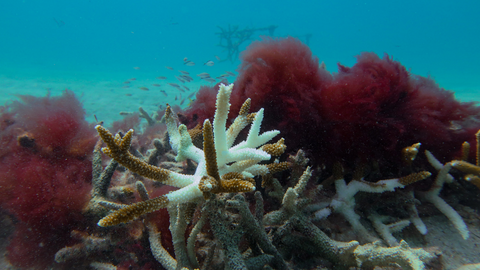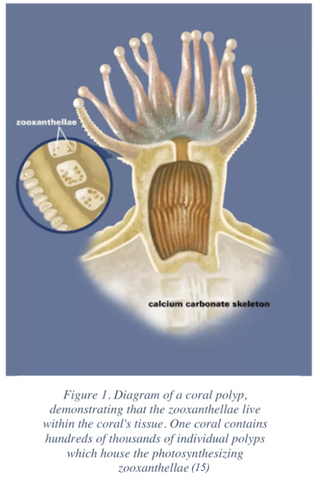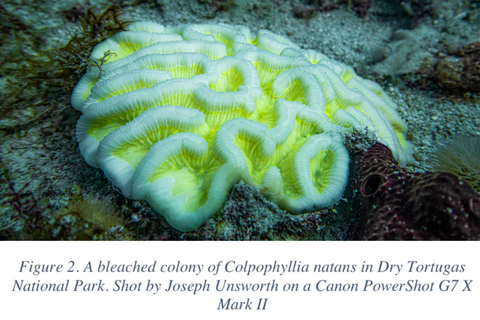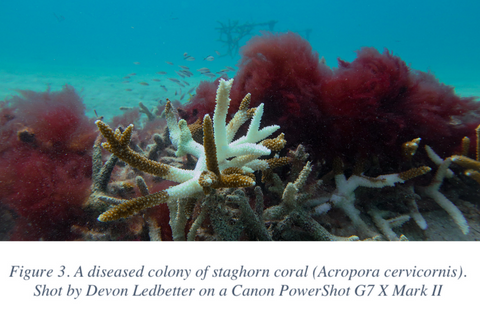References
- Life In The World’s Oceans: Diversity, Distribution, And Abundance [PDF] [7onvoeds8e70]. https://vdoc.pub/documents/life-in-the-worlds-oceans-diversity-distribution-and-abundance-7onvoeds8e70. Accessed 8 Jul 2022
- Guo W, Bokade R, Cohen AL, Mollica NR, Leung M, Brainard RE (2020) Ocean Acidification Has Impacted Coral Growth on the Great Barrier Reef. Geophysical Research Letters 47:e2019GL086761. doi: 10.1029/2019GL086761
- US EPA O (2016b) Global Greenhouse Gas Emissions Data. https://www.epa.gov/ghgemissions/global-greenhouse-gas-emissions-data. Accessed 27 Jun 2022
- SECORE International | Why coral reefs need our help. https://www.secore.org/site/corals/detail/23.html. Accessed 27 Jun 2022d
- Baker AC (2011) Zooxanthellae. In: Hopley D (ed) Encyclopedia of Modern Coral Reefs: Structure, Form and Process. Springer Netherlands, Dordrecht, pp 1189–1192
- US EPA O (2016a) Climate Change Indicators: Sea Surface Temperature. https://www.epa.gov/climate-indicators/climate-change-indicators-sea-surface-temperature. Accessed 27 Jun 2022
- Ainsworth TD, Heron SF, Ortiz JC, Mumby PJ, Grech A, Ogawa D, Eakin CM, Leggat W (2016) Climate change disables coral bleaching protection on the Great Barrier Reef. Science 352:338–342. doi: 10.1126/science.aac7125
- (2019) How long does it take coral reefs to recover from - Feb 2019. https://www.jcu.edu.au/news/releases/2019/february/how-long-does-it-take-coral-reefs-to-recover-from-bleaching. Accessed 1 Jul 2022
- Ocean Acidification | Smithsonian Ocean. https://ocean.si.edu/ocean-life/invertebrates/ocean-acidification. Accessed 6 Jul 2022c
- What is ocean acidification? Find out how research at Plymouth is tackling this global carbon dioxide problem. In: University of Plymouth. https://www.plymouth.ac.uk/research/ocean-acidification. Accessed 1 Jul 2022e
- Mongin M, Baird ME, Tilbrook B, Matear RJ, Lenton A, Herzfeld M, Wild-Allen K, Skerratt J, Margvelashvili N, Robson BJ, Duarte CM, Gustafsson MSM, Ralph PJ, Steven ADL (2016) The exposure of the Great Barrier Reef to ocean acidification. Nat Commun 7:10732. doi: 10.1038/ncomms10732
- Orr J, Fabry V, Aumont O, Bopp L, Doney S, Feely R, Gnanadesikan A, Gruber N, Ishida A, Joos F, Key R, Lindsay K, Maier-Reimer E, Matear R, Monfray P, Mouchet A, Najjar R, Plattner G-K, Rodgers K, Yool A (2005) Anthropogenic ocean acidification over the twenty-first century and its impact on calcifying organisms. Nature 437:681–686. doi: 10.1038/nature04095
- (2001) Mapping the Decline of Coral Reefs. https://earthobservatory.nasa.gov/features/Coral. Accessed 6 Jul 2022
- Spalding M, Burke L, Wood SA, Ashpole J, Hutchison J, zu Ermgassen P (2017) Mapping the global value and distribution of coral reef tourism. Marine Policy 82:104–113. doi: 10.1016/j.marpol.2017.05.014
- What Is Coral? A Coral Polyp and Zooxanthellae | Smithsonian Ocean. https://ocean.si.edu/oceanlife/invertebrates/what-coral-coral-polyp-and-zooxanthellae. Accessed 17 Aug 2022








